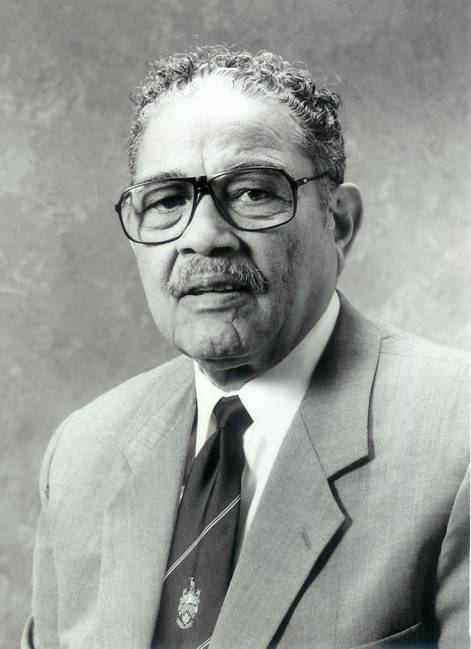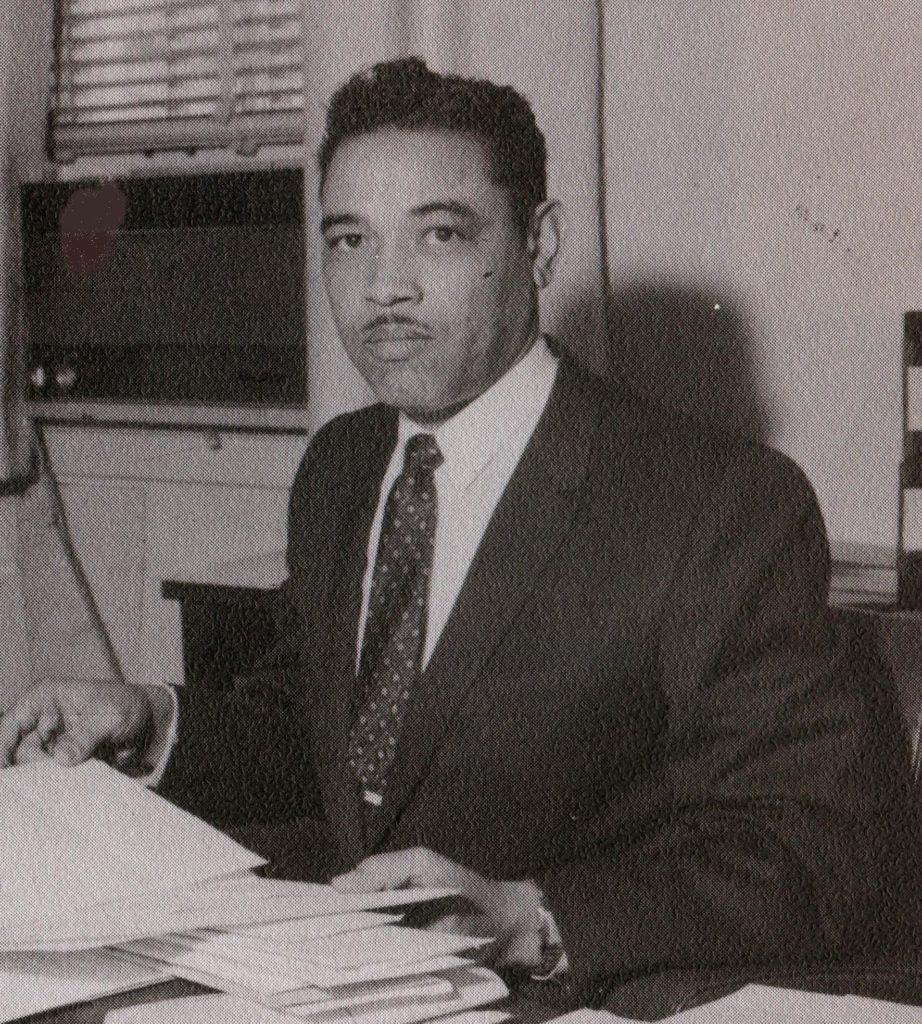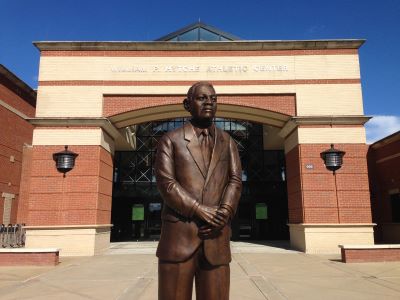
William Percy Hytche Sr. left his native Oklahoma in 1960 to answer what he later would call a divine appointment to teach at Maryland State College. Over the next 15 years, he rose through the ranks from mathematics instructor to chairman of the math department, followed by dean of student affairs. He eventually became chairman of what was then the Division of Liberal Studies.
In 1975, Hytche reached the apex at what had evolved into the University of Maryland Eastern Shore. He was appointed interim chancellor, succeeding Archie Lee Buffkins. Hytche was formally named the university’s 10th chief executive officer a year later.
He held that job for the next 21 years, forging a place in UMES’ storied history and in the hearts of thousands of alumni who passed through its doors during that era.
Hytche earned a bachelor’s degree from Langston University in Tulsa, Okla., and a master’s and doctorate from Oklahoma State University, where he taught before moving east to Maryland State.
From the day he arrived in Princess Anne, Hytche seized every opportunity to contribute to the campus community. One favorite story he liked to share involved a visit to town, the purchase of pork chop sandwiches, change thrown on the counter and a case of rudeness. It motivated him to establish the Hawk’s Nest, an eatery that became a fixture in the community.
Alumni often reminisce about how during lean times they gravitated to the Hawk’s Nest, where they could always find something to eat – or a small job to do to earn something to eat.
Becoming UMES’ top administrator did not change Hytche. He insisted on an open-door policy that often resulted in extra hours at work. Colleagues marveled at his resolve, tenacity and political savvy in navigating legislative sessions and budget hearings in Annapolis that often test the strongest of men.

“He dedicated his life to this university,” said Ronnie Holden, UMES’ vice president for administrative affairs. “It was not unusual to stop by his office on a Saturday at 10 p.m. and see him working there — developing reports, plans and talking to legislators on nights and weekends,” Holden told the Salisbury Daily Times .
Hytche was seen frequently walking the grounds and mingling with students, once pausing to kneel in his expensive suit to fix a flat tire on a student’s bicycle. To many, he was fondly known as “Papa Hytche.”
The late John S. Toll, chancellor emeritus of the University System of Maryland and president emeritus of Washington College, described UMES under Hytche as a “diamond in the rough,” which Hytche later would use as inspiration for a book title about the history of the university. Toll credited Hytche with pulling the school out from under the ever-present threat of potential closure.
The two men were friends and allies in the cause of public higher education, especially when it came to UMES’ value to the state of Maryland.
The Hytche era was colored with his spirit of collaboration that extended beyond the campus into the Town of Princess Anne and to the distant shores of Asia and Africa. Under his tireless leadership, enrollment tripled, the campus expanded by 305 acres, while 23 undergraduate and nine graduate programs were added. His Herculean efforts attracted the university’s most generous donors, up to that time, and the state’s greatest support.
His original title as chief executive was chancellor, but a 1988 state law that realigned Maryland’s public college system changed it to president.
Following his 1997 retirement, Hytche confronted health problems with the same strength that saw him through a dynamic tenure. His memoir, “Step By Step to The Top: The Saga of a President of a Historically Black University,” was published in 1999. He followed that project by producing what is acknowledged to be the first comprehensive history of the university he loved: “Polishing the Diamond: A History of the University of Maryland Eastern Shore,” released in 2002.

Hytche died July 15, 2007, just past the 10th anniversary of his retirement. He was 78.
Some 800 mourners visited the campus over two days to pay respects. Following a memorial service in the Ella Fitzgerald Center for the Performing Arts, police escorted his funeral car around the Academic Oval, pausing at John T. Williams Hall just below the suite of offices he occupied as president.
Students, waving flags from 12 different countries, lined the adjacent International Flag Mall in tribute to the fallen Hawk, who brought stability to the institution and forged formal educational linkages with institutions and agencies in Cameroon, Egypt, Israel, Kenya and Nigeria.
UMES’ athletics center bears his name, and the community honored him posthumously in May 2008 by renaming a section of Broad Street leading onto campus “Dr. William P. Hytche Boulevard.”
“It touched us very much to know that Hytche Boulevard is in an area where Daddy traveled all the time,” daughter Jaquetta Hytche-Simms, told WESM radio. “His church is here on this same street. He used to own a business here. It just warms our hearts to know … all his struggles going up and down this road … and dealing with the community was worth it.”

